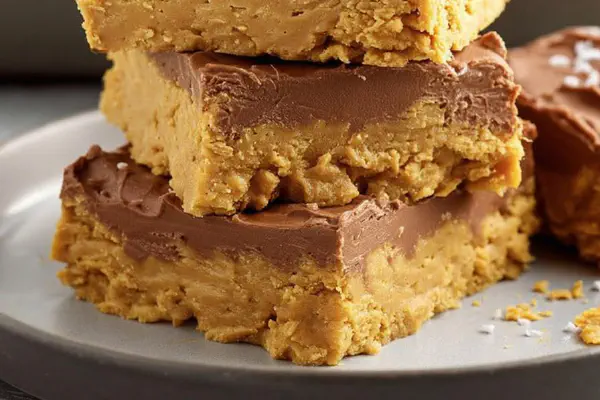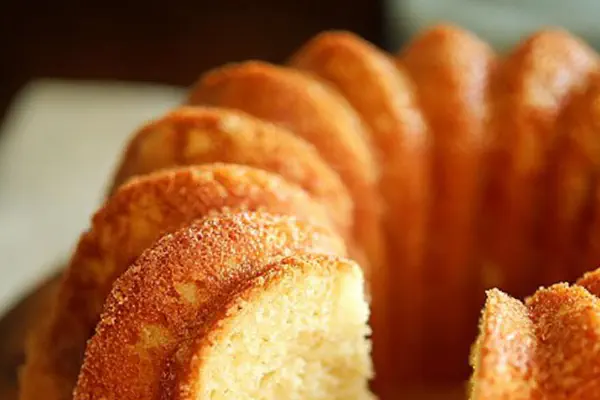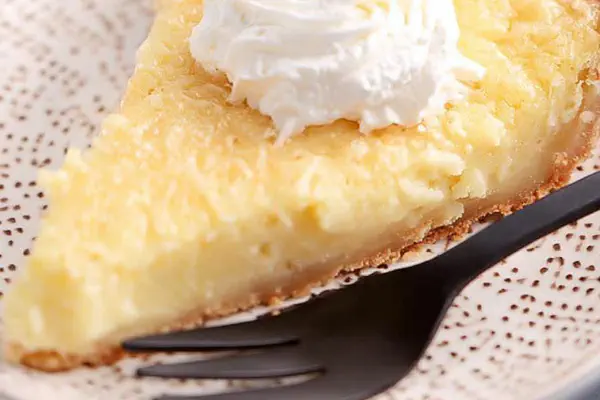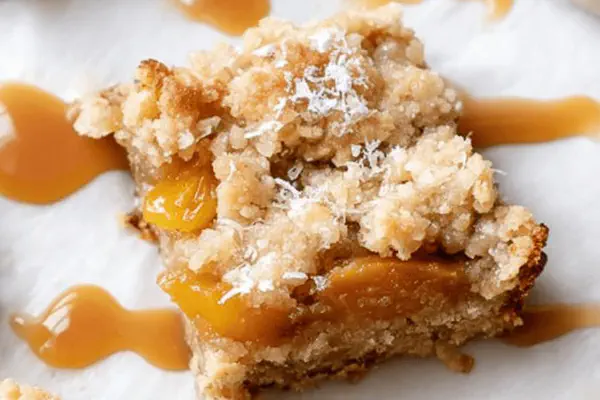Zesty Crumble Bars

By Emma
Certified Culinary Professional
Ingredients
- 1 1/4 cups yellow cake mix
- 1 cup rolled oats old-fashioned
- 7 tablespoons unsalted butter softened
- 1/3 cup fresh lemon juice
- 1 1/4 cups sweetened condensed milk
- 1/4 teaspoon lemon zest for added zing optional
About the ingredients
Method
- Preheat oven to 345°F (175°C). Spray an 8x8-inch pan lightly with nonstick spray or butter. Dusting flour helps release bars after baking but optional.
- Mix cake mix, oats, and softened butter in large bowl till crumbly but sticks together when pinched. Should look coarse, not smooth paste. Reserve about half for topping.
- Press half of crumb mixture firmly and evenly in pan base. Don’t skimp on pressing or crust won’t hold slicing. Bake 18–22 minutes; watch for edges turning light golden, center firm but not browned.
- While crust bakes, stir lemon juice and sweetened condensed milk in small bowl. Start slow with juice addition to avoid lumps. Thickens after a couple minutes stirring. Adding lemon zest amps aroma and bite — optional but recommended.
- Remove crust once baked, hot pan smells buttery, crust feels set. Immediately pour lemon filling over crust, spread gently so not to disturb crust’s surface. The contrast of warm crust and cold tart filling is key.
- Crumble reserved base mixture evenly over lemon layer. Don’t press; scattered crumbs bake into crispy topping that cracks when cold. Bake again 28–33 minutes or until topping is golden brown and lemon layer jiggles slightly but does not leak. Edges bubbling a good sign.
- Remove from oven and cool to room temp completely, then refrigerate at least 2 hours to firm up filling. Too early cutting = messy bars. Use serrated knife for neat squares.
- Store covered in fridge up to 4 days. Reheat briefly for softer texture or serve chilled for firm tanginess.
Cooking tips
Chef's notes
- 💡 Press crumb mixture firm but don’t compact. Coarse texture still visible, not paste. Crust needs bite and structure; too light crust means crumble when sliced. Half base mixture set aside for topping. Watch crust baking carefully; edges go light gold first, center just set. Oven spots vary so eyeball carefully.
- 💡 Add lemon juice slow to condensed milk mix. Avoid lumps, stir gently. Custard thickens in minutes, slight jiggle means ready for topping. Zest optional but worth small pinch only. Overdo zest and bitter oils ruin delicate balance. Cold juice beats bottled in aroma and brightness. Custard poured hot on hot crust sticks better.
- 💡 Topping crumbled loosely, scattered not pressed. Crumbs create pockets of crunch. If pressed, topping gets dense, heavy. Bake longer if pale; golden browning triggers Maillard, more flavor. Watch lemon layer jiggle to gauge doneness. Bubbling edges good sign filling cooked through but still tender.
- 💡 Cool bars completely on wire rack before refrigerating. Chilling firms custard; hot bars slice sloppy and leak. Serrated knife helps neat squares without smashing layers. Pan spray or butter critical to prevent stubborn sticking during slicing. Flour dusting not needed if well greased, keeps crust intact.
- 💡 Substitutions possible but shift texture. Graham cracker crumbs for oats—flavor profile changes, less chew. Evaporated milk plus sugar for condensed milk works but custard gets thinner, less sweet. Use old-fashioned oats only; instant oats gummy, wreck crispiness. Softened butter coats oats better than melted, helps crumbly bind.
Common questions
Why crust falls apart?
Pressing too light. Or bake underdone. Too much butter can also cause grease pools that prevent crumb set. Cool fully. If crumbly still, next time press firmer but no paste.
Can I skip zest?
Yes but aroma and zing drop. Whole citrus flavor depends on zest oils. If skipping, maybe boost juice slightly but watch tartness balance.
Lemon filling runs out?
Usually means undercooked or juice amount too high. Bake longer, watch jiggle don’t wait for full firm. Use heavy pan for even heat. Keep stirring custard mix slow, lumps mean uneven set.
How to store bars?
Covered in fridge only. Keep airtight or bars dry out. Up to 4 days safe. Leave out too long lemon starts breaking down textures. Reheat just briefly to soften crumb if chilled stiff but slice cold means shape holds.



